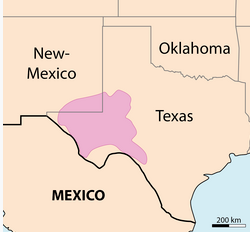Introduction Freiburg, Germany as a Solar City
Freiburg, a picturesque city located in Germany’s southwest, has earned international recognition for its remarkable commitment to renewable energy and sustainable practices.
Through its pioneering solar initiatives, Freiburg has become a global leader in promoting solar energy adoption and demonstrating the immense potential of harnessing the power of the sun. This article explores Freiburg’s journey as a “Solar City” and highlights the remarkable facts and data that underline its success in sustainable urban development.
Fact and Data
In Freiburg, the adoption of solar energy has been nothing short of extraordinary. The city boasts an impressive 3,000 hours of sunshine annually, making it an ideal location for solar power generation. To capitalize on this abundant resource, Freiburg has installed an impressive array of solar panels across its rooftops, public buildings, and even its iconic Solar Settlement.
The collective solar capacity installed in Freiburg exceeds 380 MW, generating around 420 GWh of clean electricity per year. This remarkable feat translates to a significant reduction of approximately 300,000 tons of carbon dioxide emissions annually, contributing to Germany’s ambitious renewable energy targets.
Freiburg, Germany: a Solar City
Freiburg’s transformation into a solar city has been a result of visionary leadership, community engagement, and a strong commitment to sustainable urban development. Over the years, the city has implemented a range of solar initiatives that have revolutionized the way energy is generated and consumed.
One of Freiburg’s notable solar projects is the Solar Settlement, an innovative neighborhood designed to showcase sustainable living. The settlement consists of energy-efficient buildings with solar panels integrated into their design, allowing residents to generate their own renewable electricity. These solar-powered homes, combined with energy-efficient features, have led to a substantial decrease in energy consumption and an impressive reduction in carbon emissions.
Another key aspect of Freiburg’s solar success lies in its commitment to public infrastructure. Solar panels adorn numerous public buildings, including schools, libraries, and community centers, contributing to the city’s overall solar capacity. Moreover, the city has also facilitated solar installations on privately owned buildings through favorable policies, financial incentives, and public awareness campaigns. This holistic approach has fostered a strong culture of solar energy adoption among Freiburg’s residents and businesses.
The positive impact of Freiburg’s solar initiatives extends beyond environmental benefits. The city’s solar industry has experienced significant growth, leading to the creation of numerous green jobs and stimulating the local economy. Freiburg has become a hub for solar research, innovation, and development, attracting experts, businesses, and investors from around the world. The expertise and knowledge generated within the city’s solar sector have positioned Freiburg as a leading center of excellence in sustainable urban development.
Furthermore, the success of Freiburg’s solar journey has also inspired other cities globally to follow suit. The city serves as a living example of how renewable energy can be integrated seamlessly into urban landscapes, fostering a harmonious coexistence between energy generation, consumption, and sustainable living.
Conclusion for Freiburg, Germany: Leading the Way as a Solar City
Freiburg, Germany, stands as a shining example of a solar city, showcasing the immense potential of solar energy adoption in sustainable urban development.
Through its pioneering initiatives and ambitious solar projects, the city has successfully harnessed the power of the sun to generate clean, renewable electricity while reducing its carbon footprint.
The remarkable facts and data surrounding Freiburg’s solar capacity, energy generation, and emissions reduction underline the significant impact it has made in the transition towards a greener and more sustainable future. As other cities seek inspiration for their sustainable endeavors, they can look to Freiburg as a model of success and an embodiment of the transformative power of solar energy.
https://www.exaputra.com/2023/06/freiburg-germany-leading-way-as-solar.html
Renewable Energy
What Americans Mean by “The South”
 Most Americans have their own take on the geography of the South. For me, it’s not completely geographic; it’s partly sociographic. For example, Northern Virginia is about as cosmopolitan a place as you’re going to find in the United States, but it’s at the same latitude as West Virginia, which ranks 45th out of the 50 states in education.
Most Americans have their own take on the geography of the South. For me, it’s not completely geographic; it’s partly sociographic. For example, Northern Virginia is about as cosmopolitan a place as you’re going to find in the United States, but it’s at the same latitude as West Virginia, which ranks 45th out of the 50 states in education.
Renewable Energy
Why Steve Schmidt Left the Republican Party — and What We Can All Learn
 I know lots of wealthy people from prep school, college, and several decades of business consulting, all of whom seemed like decent folks at the time. Yet now, I sometimes wonder how many are Trump donors. It’s upsetting just to think about it.
I know lots of wealthy people from prep school, college, and several decades of business consulting, all of whom seemed like decent folks at the time. Yet now, I sometimes wonder how many are Trump donors. It’s upsetting just to think about it.
It’s hard to believe that this collapse of basic moral values happened in the United States.
Why Steve Schmidt Left the Republican Party — and What We Can All Learn
Renewable Energy
An Idea for the Permian Basin: Leave It Alone
 The Permian Basin is a vast sedimentary basin in West Texas and southeastern New Mexico that is the largest oil and gas-producing region in the United States.
The Permian Basin is a vast sedimentary basin in West Texas and southeastern New Mexico that is the largest oil and gas-producing region in the United States.
I just got an email from “East Daley,” whose white paper Permian Basin at a Crossroads “breaks down who stands to benefit—and who’s at risk.”
I can answer these questions without even reading the white paper:
Who stands to benefit (monetarily): Greedy pigs whose investments are ruining the planet.
Who’s at risk: The eight-plus billion people on this planet who, along with their descendants, are counting on a stable climate.
-
Climate Change2 years ago
Spanish-language misinformation on renewable energy spreads online, report shows
-
Climate Change3 months ago
Guest post: Why China is still building new coal – and when it might stop
-
Climate Change Videos2 years ago
The toxic gas flares fuelling Nigeria’s climate change – BBC News
-

 Greenhouse Gases1 year ago
Greenhouse Gases1 year ago嘉宾来稿:满足中国增长的用电需求 光伏加储能“比新建煤电更实惠”
-
Greenhouse Gases3 months ago
Guest post: Why China is still building new coal – and when it might stop
-

 Climate Change1 year ago
Climate Change1 year ago嘉宾来稿:满足中国增长的用电需求 光伏加储能“比新建煤电更实惠”
-

 Carbon Footprint2 years ago
Carbon Footprint2 years agoUS SEC’s Climate Disclosure Rules Spur Renewed Interest in Carbon Credits
-
Renewable Energy4 months ago
US Grid Strain, Possible Allete Sale















